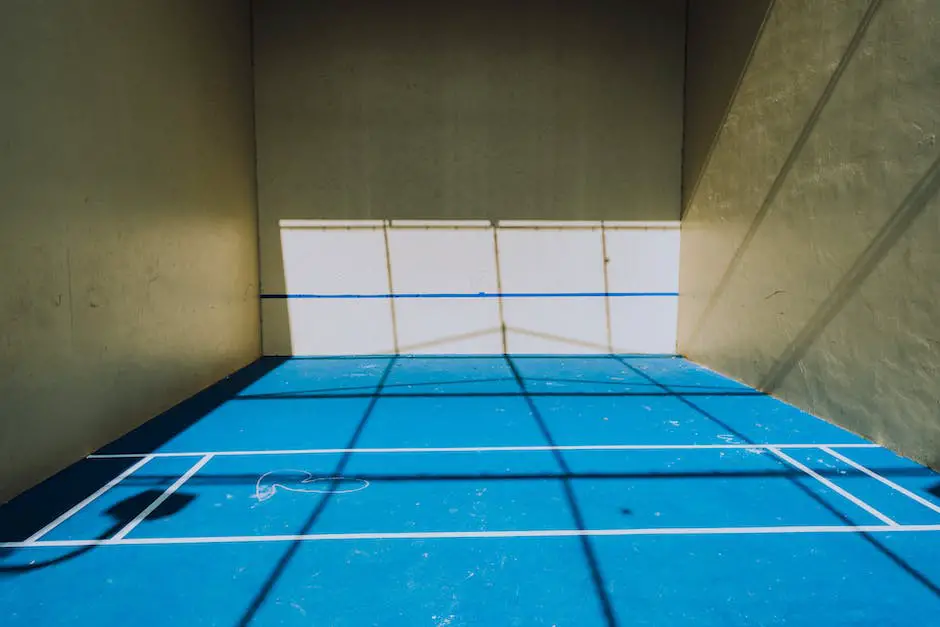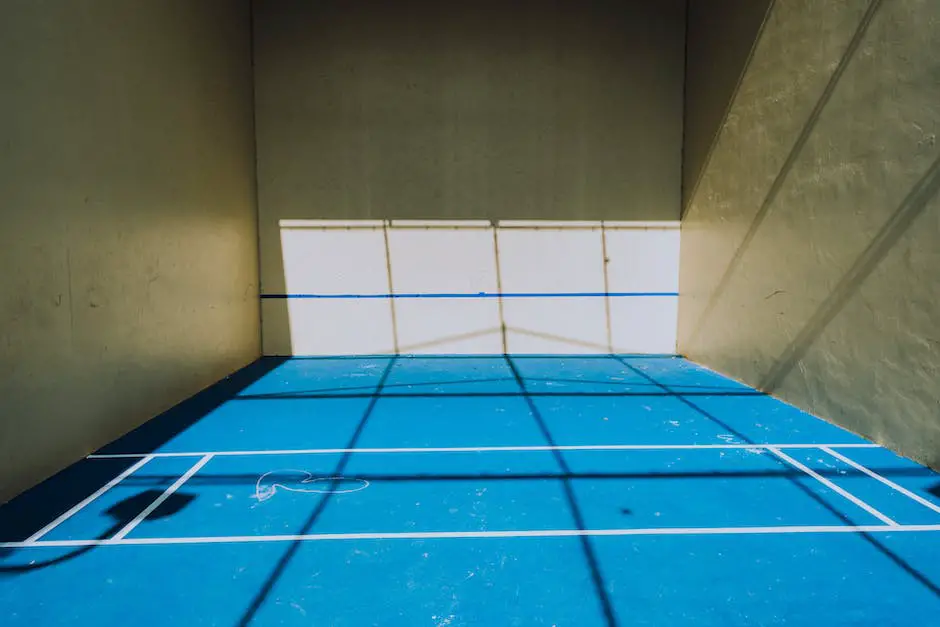Pickleball is a rapidly growing sport in America that uniquely combines elements of tennis, badminton, and ping-pong into an engaging game that can be played both indoors and outdoors. This versatile sport offers a wide array of advantages on both types of courts, making it a game that you can relish both under the cosiness of a roof or in the open, basking in natural sunlight. This detailed guide will shed light on the ins and outs of both forms of game, unpacking their unique characteristics, different strategies, and specific equipment needed to help you make an informed choice about where and how you might want to play.
Understanding the Game of Pickleball
Understanding Pickleball: The Basics
Originating on Bainbridge Island, Washington, in 1965, pickleball combines the elements of badminton, tennis, and ping-pong. Designed as a backyard pastime for families, it rapidly gained popularity, seeing extraordinary growth across the United States. The sport is governed by the USA Pickleball Association which provides a comprehensive set of rules and guidelines.Here’s a quick rundown of the fundamental rules: The game is typically played on a badminton-sized court using a net similar to tennis, but a bit lower. Paddles made of a composite, or wood, and plastic balls with holes (like a wiffle ball) are the equipment used. Pickleball can be played as singles or doubles, and the scoring is up to 11 or 21 points, with players needing to win by two points.
Indoor vs Outdoor Pickleball: The Differences
While the basic game remains the same, playing environments can create a different experience in pickleball games. The primary differences between indoor and outdoor pickleball are related to court surfaces, weather conditions, and the ball used.Outdoor courts typically have a rougher surface made of concrete or asphalt, which can have an impact on how the ball bounces. Indoor courts, often made of polished wooden or synthetic floors, offer a more predictable and consistent bounce. Also, playing outdoors brings additional elements like wind and sun, which can affect a player’s service, return, and overall strategy.
The difference in design and material makes the indoor and outdoor pickleball noticeably different. Outdoor balls are typically made harder with a thicker wall to withstand the harsh outdoor surfaces and weather conditions. They also have smaller and more numerous holes, offering less air resistance and enabling faster play. Indoor balls are lighter and softer with larger holes, providing a slower play, which can be more manageable for beginners.
Choosing the Right Equipment
Depending on where you plan to play, you will need to choose your equipment accordingly. Most importantly, the decision of the ball. As mentioned earlier, the outdoor balls are more durable with smaller holes and a heavier weight, enabling them to fare better in windy conditions and on the harsh concrete surfaces.Indoor balls, on the other hand, are designed to offer less bounce, making them ideal for smoother, wooden surfaces. They also make less noise, which is often a consideration for indoor environments.
The paddle choice will also depend on your personal playing style and where you are likely to play. Lightweight paddles offer better control and are easier on the arm, which might be suited for indoor environments. On the contrary, a heavyweight paddle offers more power, which can be beneficial when battling outdoor elements like wind.
Indoor vs Outdoor Pickleball: A Strategic Overview
Indoor pickleball provides a slower-paced game that emphasizes control and precision. Players regularly make use of the entire court and employ soft, accurate shots to prolong rallies.On the other hand, outdoor pickleball requires players to adapt to a range of elements, including wind and sunlight. The strategies for this setting are typically more aggressive, capitalizing on high-speed shots, forceful slams, and deep delivers that utilize the larger court size.
In brief, the basic rules and mechanics of pickleball remain consistent whether it is played indoors or outdoors. However, the choice between these two settings requires an understanding of their distinct strategic nuances and necessary gear modifications.

Indoor Pickleball – Advantages and Drawbacks
Why Play Indoor Pickleball?
A chief benefit of indoor pickleball is its predictable environment. Absence of concerns about sun, wind, or rainfall makes it an excellent choice for novice players familiarizing themselves with the game’s fundamentals. Plus, the climate-controlled setting ensures that games or tournaments go on as planned, providing a stable schedule and continuity of play.
Indoor pickleball balls are specifically engineered for this environment, with lighter weight and larger holes than their outdoor counterparts. They move at a slower pace and are easier to control, promoting a more strategic game that values skill and technique over brute strength.
Playing indoors also offers quieter, less chaotic surroundings, a boon for those who prefer less distractions. With excellent lighting conditions, indoor courts eliminate potential visual hiccups caused by shadows or harsh sunlight.
Drawbacks of Indoor Pickleball
However, there are some drawbacks to playing pickleball indoors. The main challenge being the fact that it is typically more costly. Whereas outdoor courts are often public and free to use, indoor courts are usually privately owned, requiring membership fees or per-use fees.
Additionally, indoor venues might have limitations regarding the available space, particularly in urban areas where large indoor spaces are at a premium. This could lead to smaller court sizes, or fewer courts available, leading to wait times for players.
While the use of indoor balls can be an advantage in terms of control, it can also present a challenge for players acclimating to the lighter weight and larger holes, especially when transitioning between indoor and outdoor play.
Indoor play also lacks the advantages found in outdoor play, such as the benefits of fresh air, vitamin D from sunlight, and the aesthetic enjoyment of playing outdoors.
Strategies for Indoor Pickleball
Given the design of the indoor ball and the lack of weather disturbances, indoor pickleball can be a game of finesse and accuracy. Shots in indoor pickleball often involve a lot of touch, like dinks and third-shot drops. This provides a great chance for players to develop these types of shots.
However, players also need to be aware of the indoor setting itself. High lobs might hit the ceiling or fixtures and an unpredictable bounce off a wall can turn the tide of the game. Thus, an adjustment in strategy and a different approach in shot selection come into play when participating in indoor pickleball.
Indoor vs Outdoor Balls
Due to different playing conditions, indoor and outdoor pickleball balls are different. Indoor balls are made of a slightly softer plastic and have larger holes, causing them to have slower, more predictable flight paths. Outdoor balls, on the other hand, have smaller, more numerous holes, they are harder and heavier, making them better suited for wind resistance.
Understanding the difference between indoor and outdoor pickleball is essential for anyone seeking to choose which version suits them most. While indoor pickleball presents a controllable environment, shielding players from unpredictable variables like weather conditions, it also brings unique challenges. The choice between the two primarily depends on an individual’s preference, adaptability level, and the level of fun they want to introduce to their game.

Outdoor Pickleball – Merits and Disadvantages
Advantages of Outdoor Pickball
Exploring the uniqueness of outdoor pickleball reveals numerous benefits. Views of natural beauty, fresh air, and broader spaces make this version of the game appealing. The larger space available outdoors allows for a more dynamic game, while exposure to nature brings overall well-being benefits, including improved physical fitness and mental health.
Despite sharing fundamental rules with the indoor version, outdoor pickleball demands additional strategic planning due to the variability of conditions. Weather factors like wind and sun significantly influence the gameplay, challenging players to continually adapt. This nurtures strategic and reactive skills, creating a game filled with complexity and diversity.
Outdoor Courts and Equipment
Outdoor pickleball courts are typically made of a hard, concrete surface and lined with a non-slip material. This type of court can be easier on the feet and legs than indoor wooden floors due to their softer impact. Outdoor balls are slightly different than their indoor variations. They’re generally harder, have smaller holes, and are bulkier to deal with outdoor elements such as the wind.
Outdoor Pickleball – Disadvantages
While there are many benefits to playing pickleball outdoors, there are a few challenges to contend with. As already hinted, weather conditions pose the biggest challenge. Too much sun or wind, or even a sudden bout of rain, can disrupt or even postpone play. The impact of harsh sunlight could also put strain on your eyes, or make the ball more difficult to spot.
Furthermore, outdoor courts can get hot during the summers, making the surface hard and potentially dangerous if players fall during game play. The balls can also bounce higher and move faster due to the harder surfaces of outdoor courts, which can take some getting used to, particularly if you mostly play indoors. Also, because the balls used are harder and heavier, they can cause more strain on the players’ wrists and arms.
In areas with seasonal climates, outdoor pickleball might be restricted to certain times of the year, preventing year-round play without an indoor alternative. Additionally, external noise and distractions may also impact concentration during game play outdoors.
Contrasting Indoor and Outdoor Pickleball
The game of Pickleball differs in various aspects when played indoor or outdoor. The outdoor version of the game tends to welcome a more aggressive play style, a result of a larger court size and unique attributes of outdoor balls. Resistance from wind and larger courts demand more physical energy from players. On the flip side, indoor Pickleball, owing to its confined space and slower ball movement, necessitates precision and strategy. Moreover, when playing indoors, heightened noise levels due to echoes from the ball hitting the paddle or ground could potentially be a concern, unlike in outdoor which provides a more quiet environment for play.

Comparison and Conclusion – Indoor vs Outdoor Pickleball
Distinctive Equipment and Playing Environments of Indoor and Outdoor Pickleball
Not only the method of play, but even the equipment used in indoor and outdoor Pickleball varies. Indoor pickleball balls are designed with larger holes and softer textures, ideal for an environment where wind won’t influence the game. Conversely, outdoor balls, crafted smaller and harder, tackle wind resistance and other outdoor factors.They are therefore quicker and hover less than the indoor balls.
The surface on which the games are played also vary. Indoor pickleball often takes place on wooden or cement courts which may include a gym floor. The softer nature of these courts can ease the pressure on joints, a beneficial factor for players suffering from arthritis or any joint issues. Outdoor Pickleball, however, mainly occurs on hard court surfaces which are believed to provide a more robust grip, possibly giving players a sense of stability during gameplay.
Playing Conditions: Indoor vs Outdoor Pickball
Another key difference between indoor and outdoor pickleball lies in the playing conditions. Weather conditions affect outdoor play significantly. Sunlight can cause glare and heat can affect player comfort and hydration. Wind is another factor to consider as it can alter the course of the ball mid-flight.
Indoor pickleball provides a controlled environment without weather disturbances. Lighting is consistent and there is no wind to influence ball travel. However, some players who prefer indoor pickleball have noted that sound can be a daunting factor. Indoor gyms can echo, making the noise of pickleball sometimes overwhelmingly loud.
Player Skills and Strategies: Indoor vs Outdoor Pickleball
Player skills and strategies may depend on whether you’re playing indoors or outdoors. Indoor pickleball often requires shorter, more controlled hits as the ball does not have to battle against any wind. This might lead to longer rallies and a more patience-oriented strategy.
Outdoor pickleball normally involves stronger hits and serves due to wind and sun factors. It requires ability to adapt quickly as outdoor conditions can change instantly. A wind gust or sudden sunlight glare can rapidly alter a game’s dynamics.
Conclusion: Indoor vs Outdoor Pickleball
The decision between indoor and outdoor pickleball will ultimately come down to personal preference. Some players may prefer the controlled conditions indoors, while others may enjoy the variability and challenge of playing outdoors.
For newcomers, trying both forms of the sport could provide insight into which plays to their strengths and preferences. They might find that indoor play suits their controlled, patient playing strategy, or perhaps the challenging variance of outdoor play offers a more engaging pickleball experience. Players can also consider factors such as respective temperatures and weather conditions of their locations, ball type preference, and even the degree to which the noise level in indoor settings bothers them.
In the end, pickleball, whether indoor or outdoor, offers a fun and competitive way to stay active and socially engaged.

Across the globe, pickleball enthusiasts find joy and challenge in both indoor and outdoor versions of the game. Each setting comes with its unique considerations and imparts a distinctive flavour to the entire gameplay. Choosing whether to play indoors or outdoors depends on a variety of individual factors including personal preference, weather concerns, access to facilities, and the appeal of distinct game strategies. By understanding the distinctions and comparative pros and cons of each version, you can make an informed decision and find a setting that most suits your pickleball journey, whether that be under a protective roof or beneath a great, expansive sky.